Dear traveler, we may get commissions from your reservations made through links in this article, at no extra cost to you. This helps keep the site running and free for all. Thank you!
Last Updated on March 22, 2024
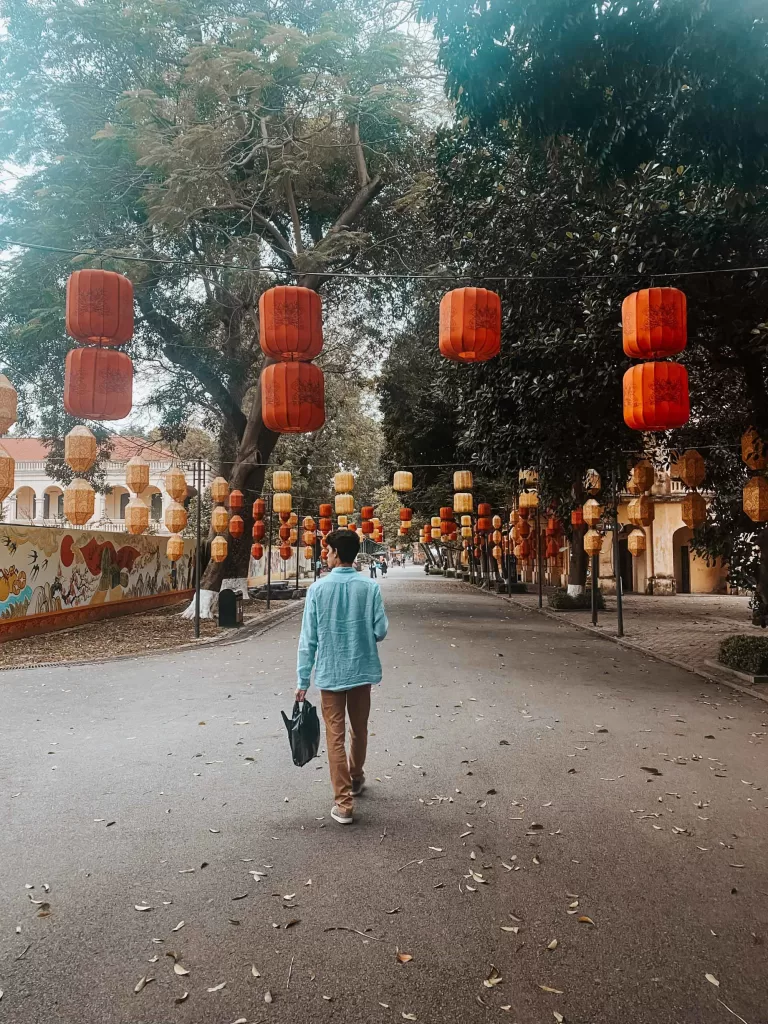
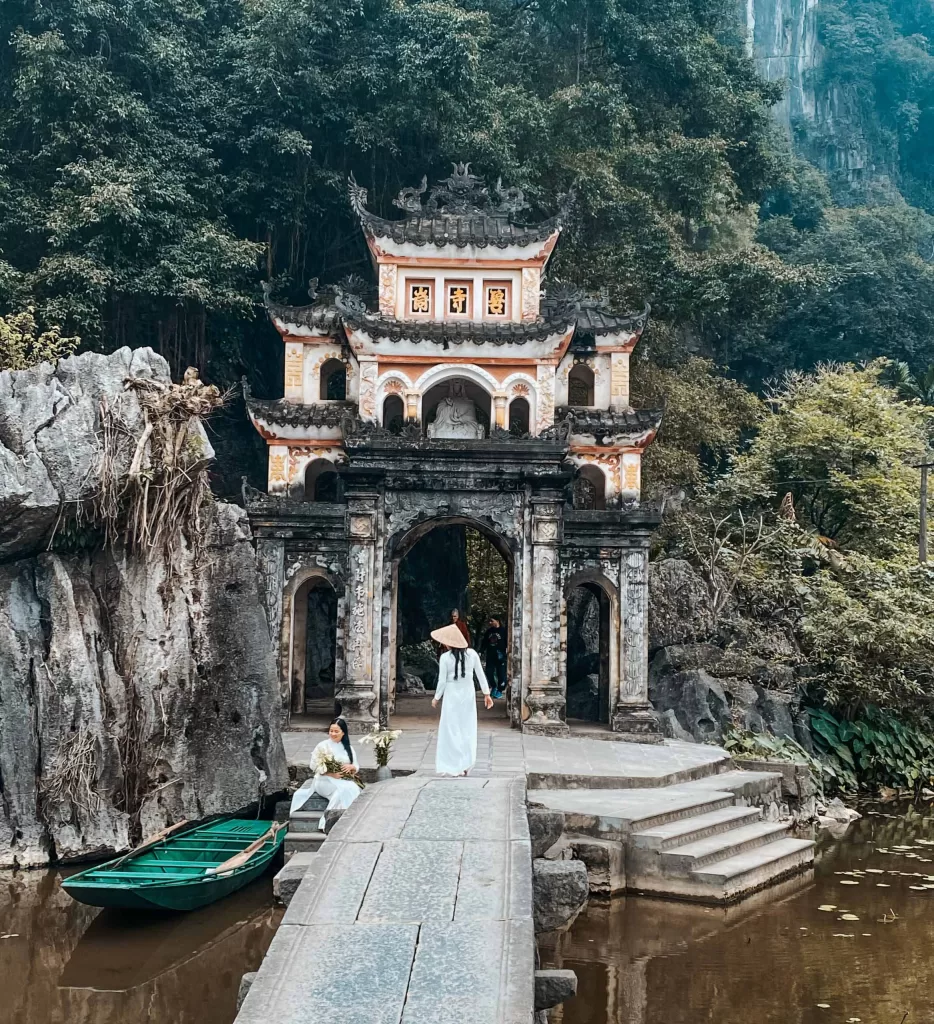
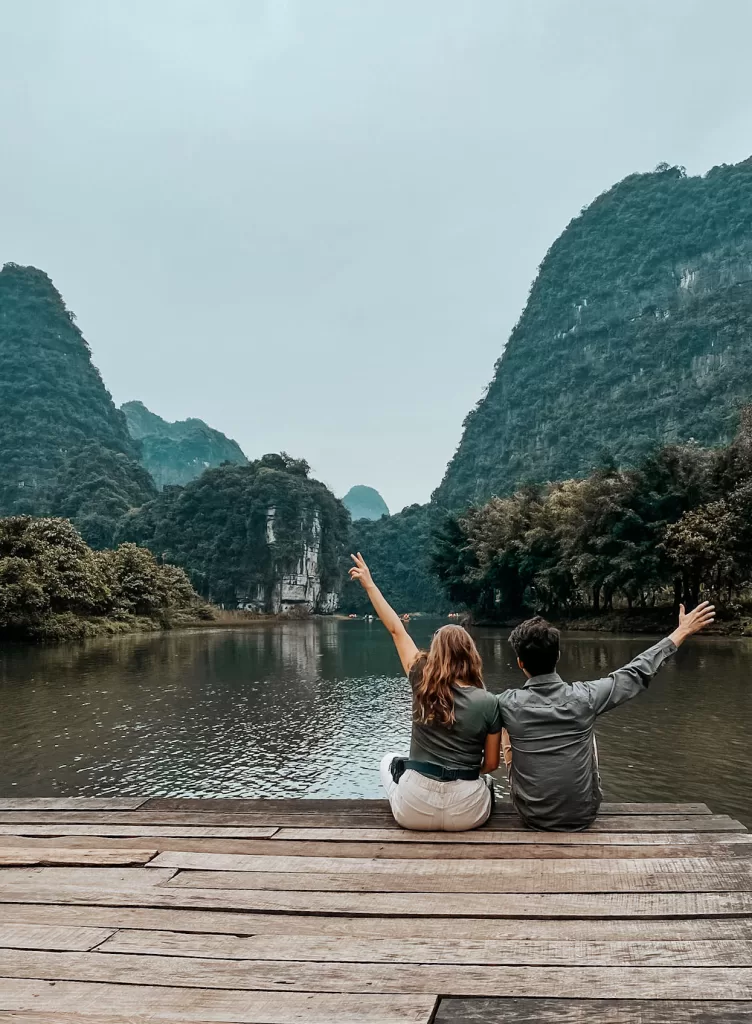
Vietnam is a rich and vibrant country, filled with stunning natural landscapes, amazing people, delicious food and an overall mystical atmosphere. This is our guide across the country, describing how you can spend 2 weeks in Vietnam!
Vietnam Travel Map
2 Weeks Itinerary
Looking for a place with rich culture, amazing landscape and warm people? Vietnam is your answer.
Nestled between China, Laos, and Cambodia, this Southeast Asian gem promises a unique adventure. In this guide we’ll explore bustling cities and serene natural wonders for an unforgettable experience. We like to be transpararent, so this is our itinerary with some honest opinions about the places we visited. In case you want to do things a bit differently we offer other options:
Day 1
- Arrive in Hanoi, the capital city
- Night in Hanoi
Day 2
- Hanoi city tour
- Night in Hanoi
Day 3
- Boat ride through the amazingTrang An in Ninh Binh region
- Night in Ninh Binh
Day 4
- Visiting Cuc Phuong National Park
- Visit Save Vietnam Wildlife and ERPC center
- Night in Hanoi
Day 5
- Cruise boat in the unique Ha Long Bay (and our honest opinion + other options!)
- Night in the cruise boat
Day 6
- Finishing Ha Long Bay visit
- Fly/Bus/Train to Hue from Hanoi
- Night in Hue
Day 7
- Hue full day city tour
- Travel to Hoi An
- Night in Hoi An
Day 8
- Ancient town of Hoi An and coconut boat trip
- Night in Hoi An
Day 9
- Ba Na Hills theme park (and our honest opinion + other options!)
- Travel to Ho Chi Min city
- Optional: Monkey Mountain or travel directly to Cat Tien National Park
- Night in Ho Chi Min
Day 10
- Visiting Cat Tien National Park
- Night in Ho Chi Min
Day 11-13
- Fly to Phu Quoc island (and our honest opinion + other options!)
- Enjoy some relax time
- Nights in Phu Quoc
Day 14
- Fly back home
Transportation and How We Explored Vietnam
Vietnam was our first time in Asia so we decided to have some help. We hired a driver as well as different guides (across the many places we visited) to help us out. Nevertheless, once we were there we realized that the Vietnamese transportation system is good to travel around the country – you can travel by train or bus, making it a more sustainable option too. A special thank you to Yin Yang Travel Asia for organizing this amazing experience. If you are thinking about visiting Vietnam and want to do it through a local tour company you should definitely check them out!
Detailed Vietnam 2 Weeks Guide
Days 1 & 2: Arrival and Visiting the Capital of Hanoi
Hanoi is a vibrant, bustling city that might seem a bit wild at first, but if you’re up for an adventure, it’s easy to catch its rhythm.
On our first day, we took a stroll around the old town. Hoan Kiem Lake is a fantastic starting point, with Ngoc Son Temple right in the middle of the water.
The next day, we had the chance to continue visiting the city. Since we booked a private tour, we had a guide, Mister Duk, exploring the city together with us. He shared historical facts and the cultural experience of Vietnam, which made the journey even more interesting.
The places we got to visit included the Ho Chi Minh Mausoleum, the Temple of Literature (Vietnam’s first university), the French Quarter and Tran Quoc Pagoda. And if you’re up for something really cool, explore craft villages like the Ceramics village.
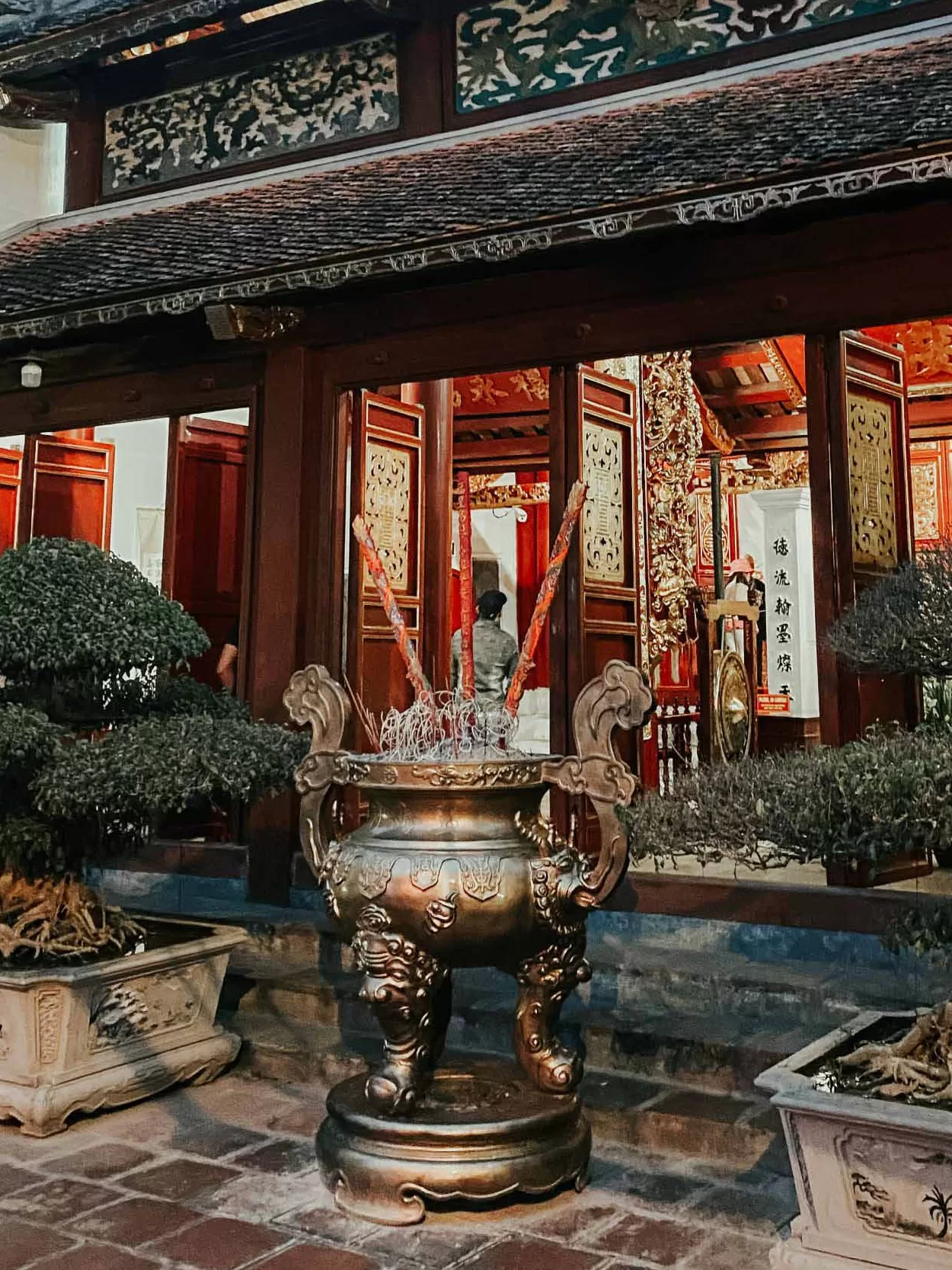
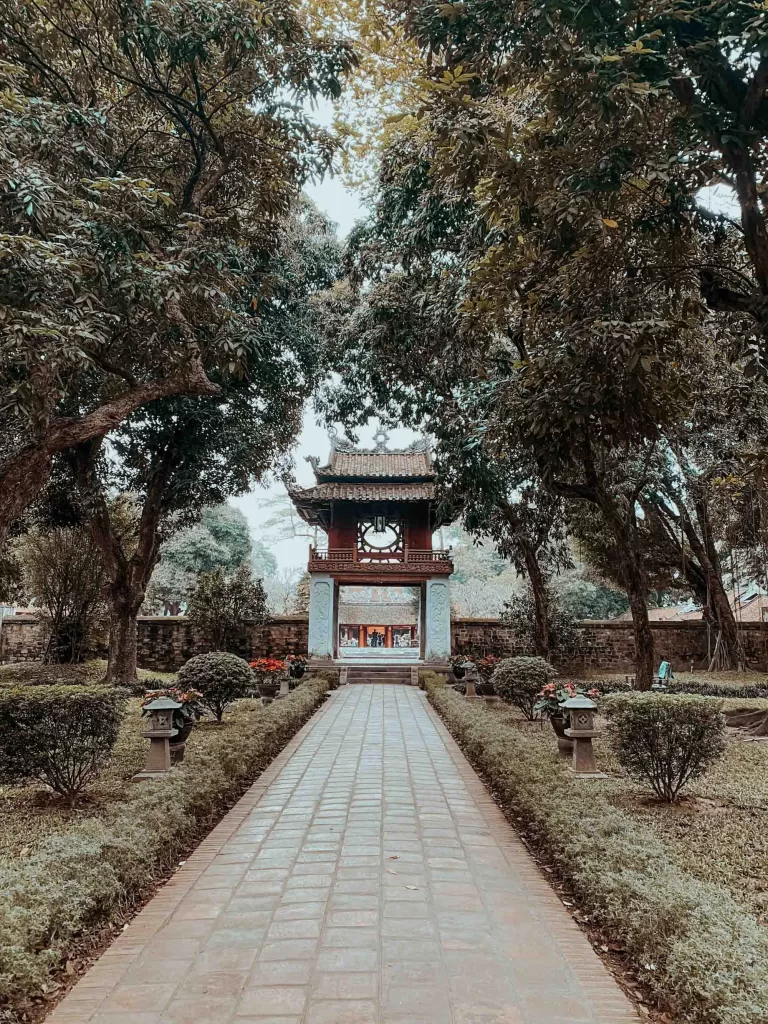
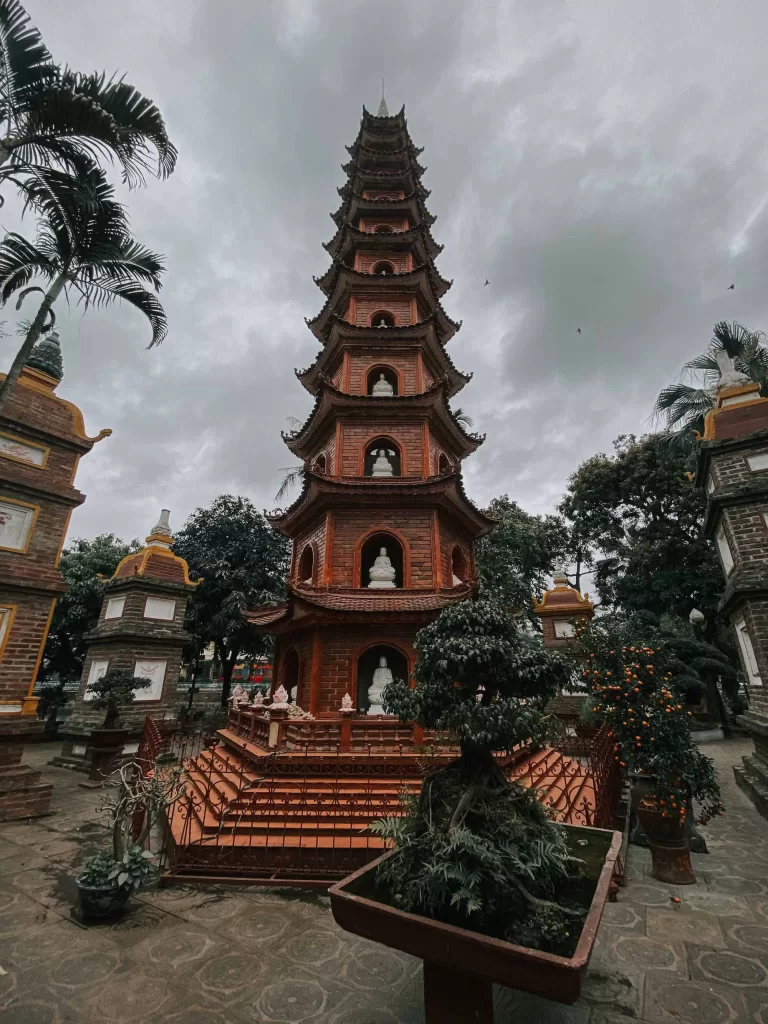
Tip: Join a free walking tour for an awesome way to see the best of Hanoi if you chose to do it on your own!
Day 3: Visiting Trang An and Ninh Binh
Ninh Binh, just a hundred kilometers from Hanoi, is absolutely stunning. You can get there by train, motorbike, or even private car.
When you arrive in Ninh Binh, make your first stop at Trang An. There, you can hop on a boat for an amazing 2 to 3-hour cruise through gorgeous caves and temples. This was for sure one of the highlights of our trip to Vietnam, it’s hard to beat the natural beauty of this place.
After that, we went over to Hang Mua. If you are feeling adventurous, climb to the top for a fantastic 360-degree view of the Tam Coc valley.
If you’re still up for more, you can do as we did and rent a bike and cruise around the rice fields. Don’t forget to check out the incredible Bich Dong Pagoda on your way!
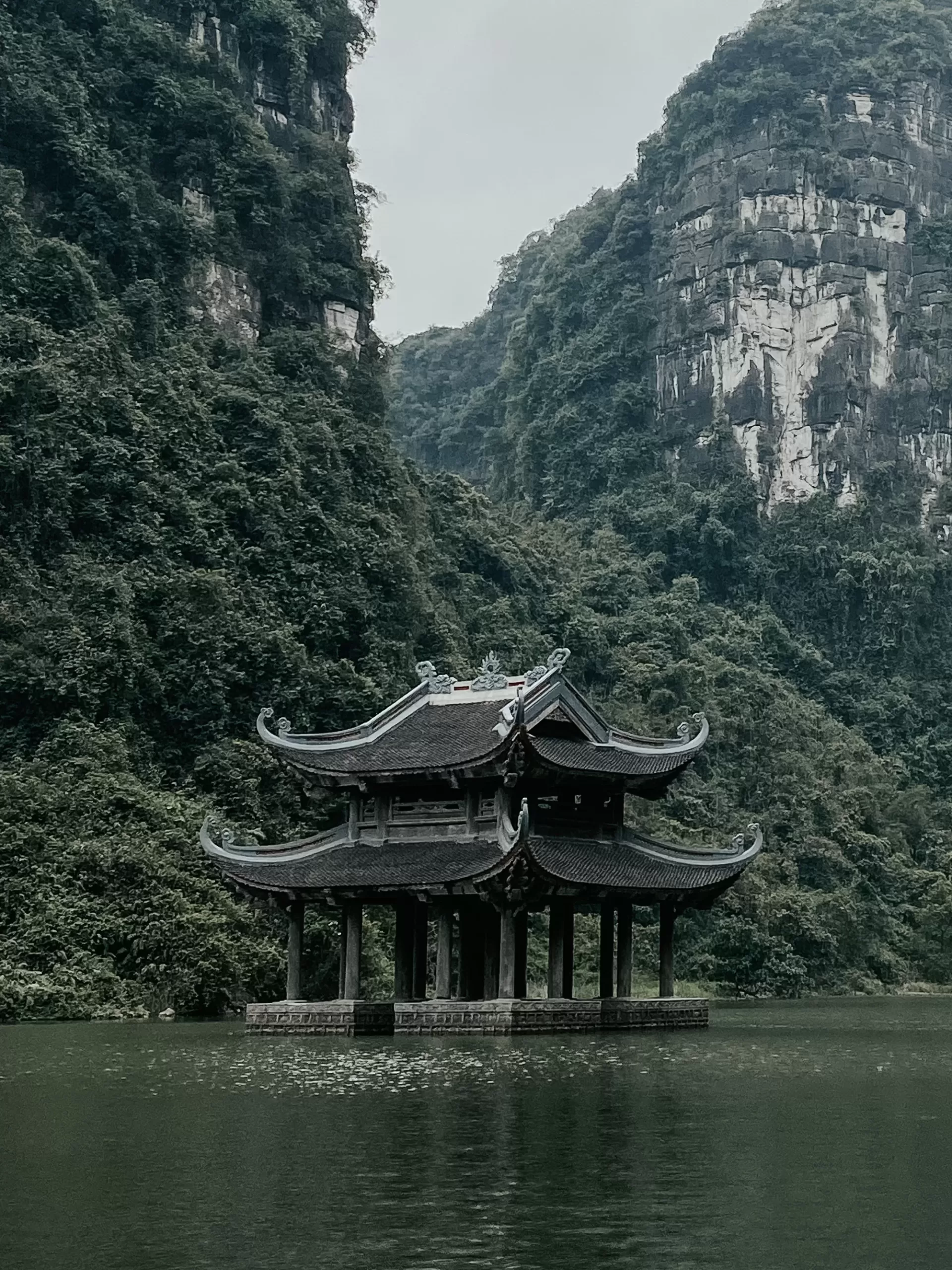


Day 4: Wildlife and Nature in Cuc Phuong
If you’re an animal lover like us you shouldn’t miss the chance to visit Cuc Phuong. Within the park you can visit the wildlife rescue center for endangered primates and support this cause. We like to support wildlife conservation organizations on our trips, so we usually leave 1 or 2 days of our itinerary to learn more about the local flora and fauna and the dangers they face.
Vietnam is home to a diversity of primates from gibbons to langurs. If you are lucky you’ll hear the gibbons calling and it’s a surreal experience. We were lucky to hear it twice at Cuc Phuong.
You can also hike in the park. We did a short hike around since we had to return to Hanoi on that day but if you visit during late April to May you’ll be greeted by hundreds of butterflies.
On this day you should travel back to Hanoi to visit Ha Long Bay on the next day.
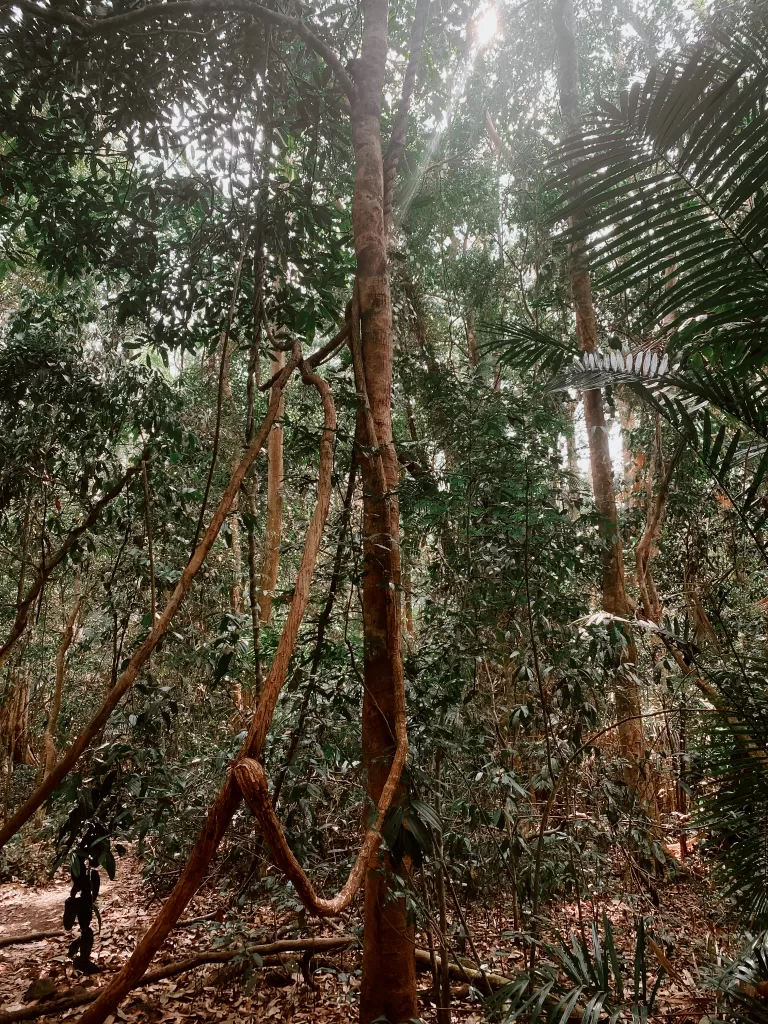
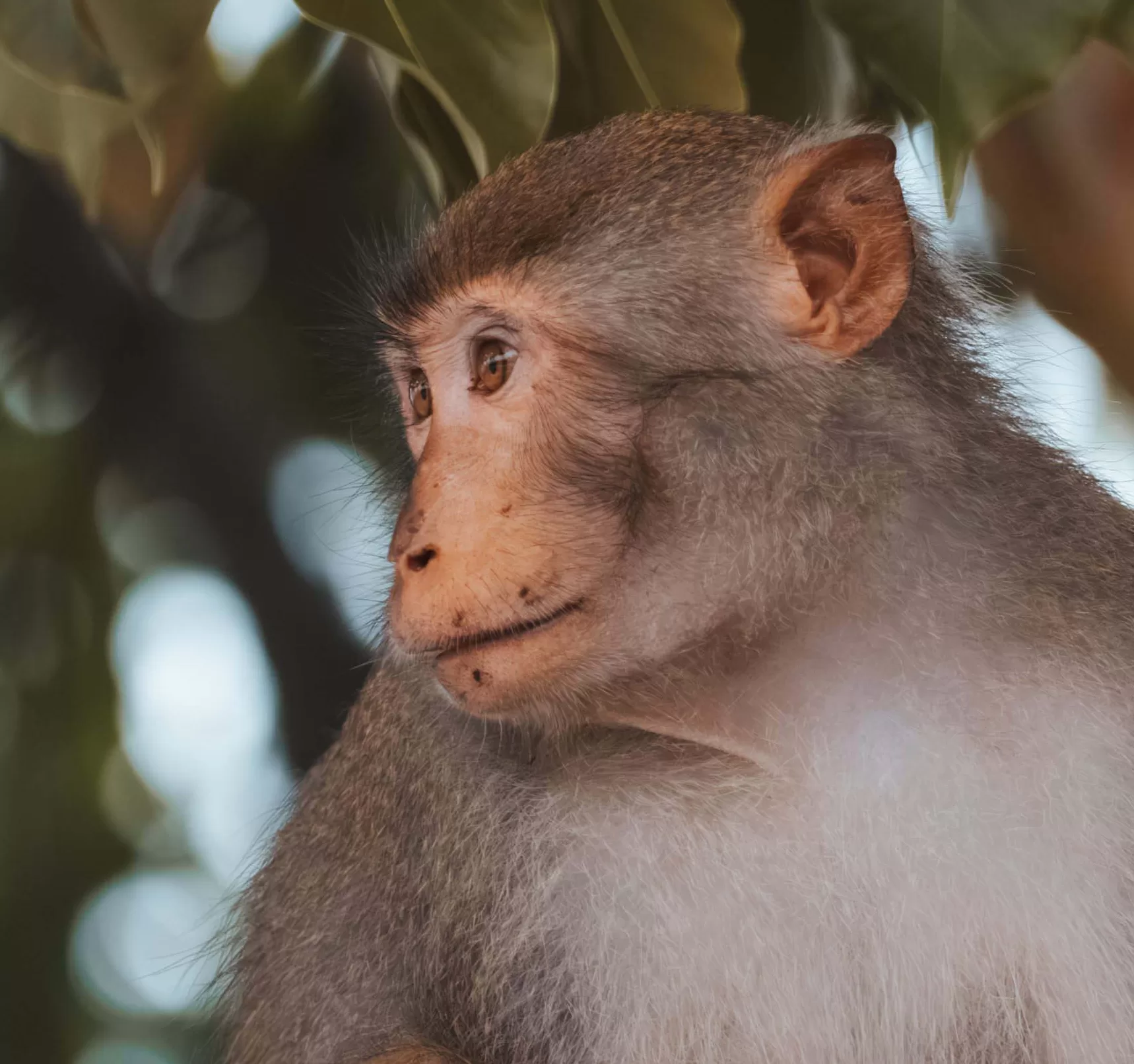
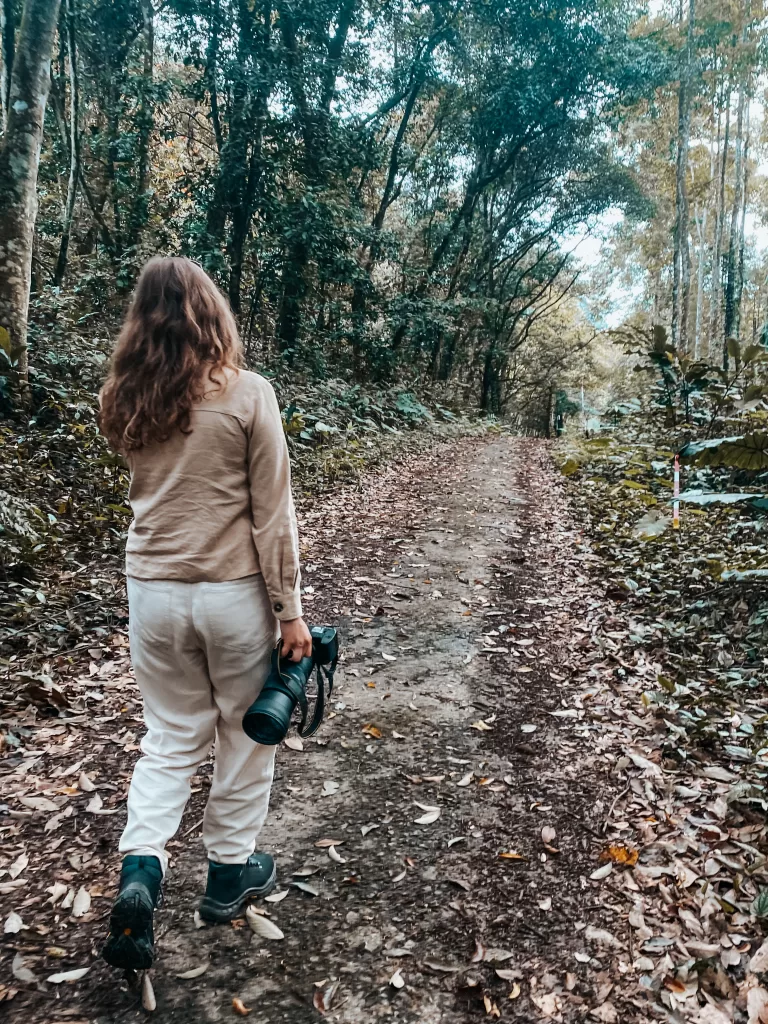
Day 5: The Majestic Ha Long Bay
Ha Long Bay is a mystical place that had everything to be perfect. While the landscape and the area are indeed a magical natural landmark, its fame came at a heavy cost since you can clearly see the impact of over-tourism. We are not saying you shouldn’t visit, it’s for sure a unique experience and one of the most beautiful and well known spots in Vietnam, but prepare to see plastic pollution and a lot of boat cruises.
The typical way to experience Ha Long Bay is by doing a 2 day/1 night cruise. You’ll be able to do some activities like kayaking and cave tours.
However, you can do things differently and head to Cat Ba island for example, which is the biggest island in Ha Long Bay. You can reach the island from Hanoi by first taking the bus to Ha Long Bay and then the ferry to the island. You can find some combine packages from Hanoi in Viator.
if you opt for Cat Ba island we did some research and found a tour with great reviews, where you spend two nights in the island.
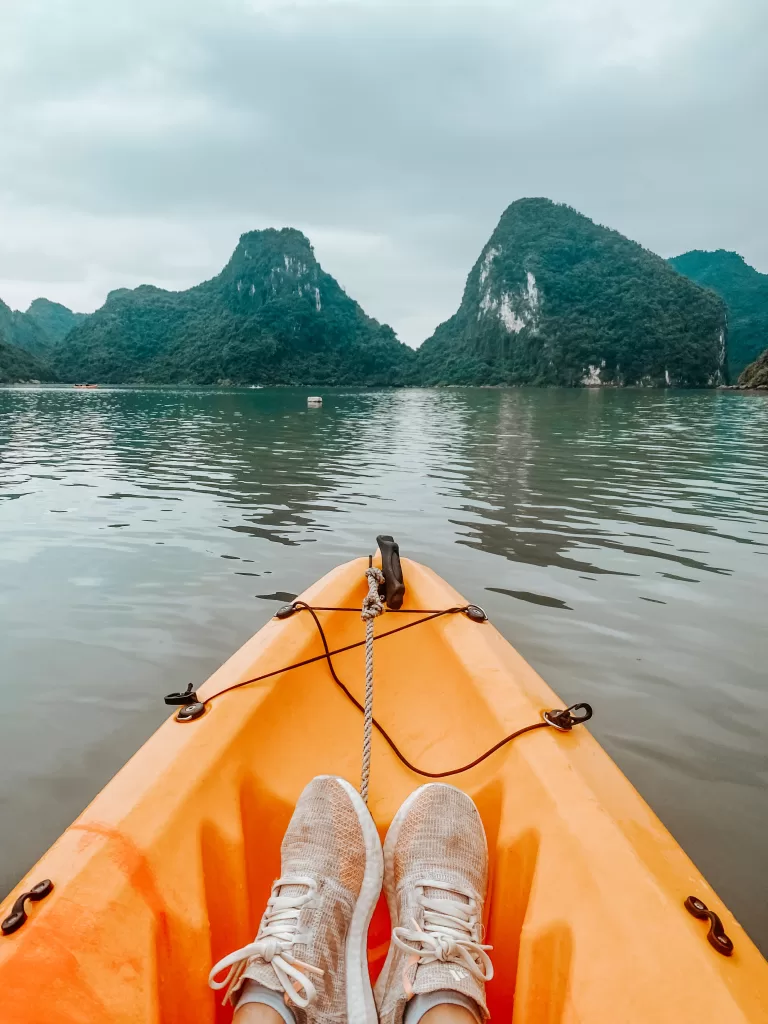
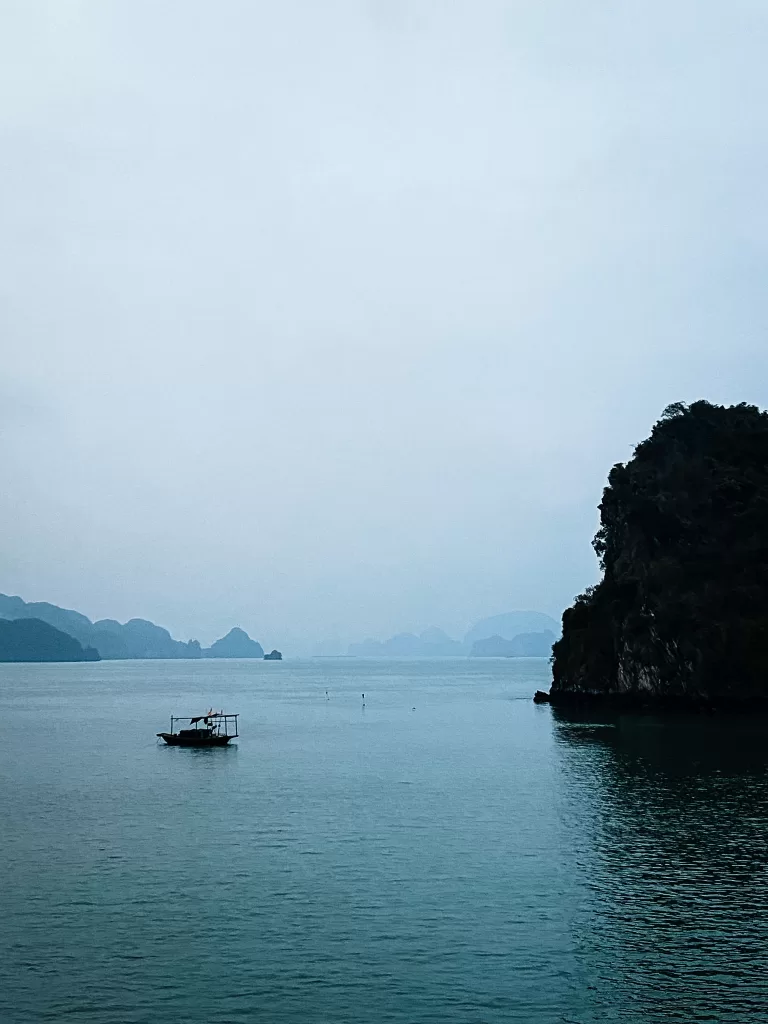
On a personal note and from a sustainability point of view, if we come back at any point in the future, we will opt for a visit to Ha Long Bay without going on a cruise given the mentioned impact.
Day 6: The Last Day in Ha Long Bay, Travel to Hue
You’ll still have some time here to enjoy Ha Long Bay in the morning. If you are on a cruise, you might have some activities scheduled during the morning and then you’ll go back to Hanoi around lunch time.
Once in Hanoi, you’ll travel to your next destination – the ancient city of Hue. To travel to Hue you have three options: plane, bus or train. If you travel by bus/train expect a 12-14h travel time, so it might be a good idea to take a sleeper train/bus.
Day 7: Travel Back in Time to the City of Hue
Hue was once the capital city of Vietnam, it’s a place full of history and landmarks that we feel it’s a mandatory stop in a Vietnam itinerary. To navigate in the city the easiest way is to hire a driver or rent a motorbike (only if you’re comfortable driving, keep in mind that it might not be the safest option depending on how accustomed you are driving in Southern Asia).
You can start your day by visiting the Imperial city, the place where the Nguyen Dynasty ruled from 1802 to 1945. Unfortunately, the conflicts happening in Vietnam during the 20th century destroyed a lot of cultural landmarks, including the Imperial City.
After visiting this spot you can head over to Thien Mu Pagoda – the Pagoda of the Celestial Lady. If you climb the stairs you’ll be treated to a nice view of the river.
The city of Hue is surrounded by a few imperial tombs, the most popular is the Royal Tomb of Khai Dinh. The tomb has several terraces, each one with a different architecture – you’ll see influences from Western and Eastern architecture. Another famous tomb is the Tomb of Minh Mang – a completely different atmosphere since it is surrounded by nature.
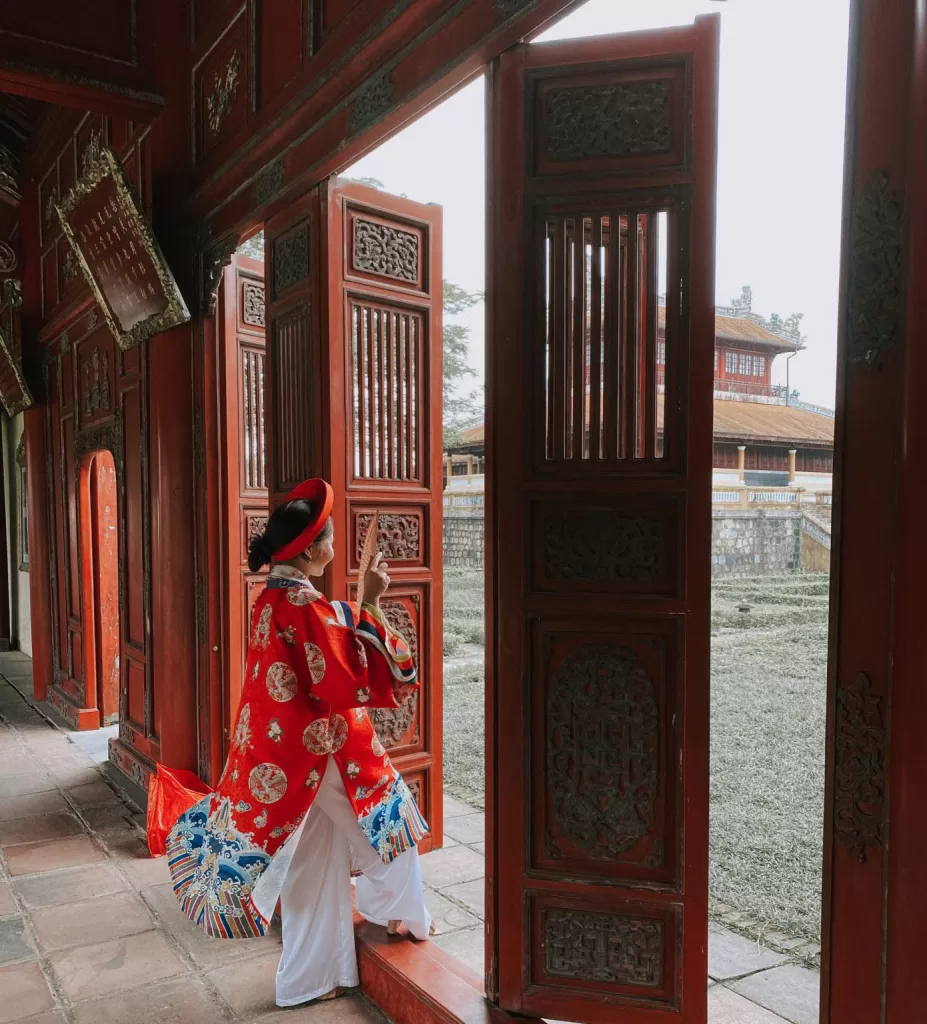
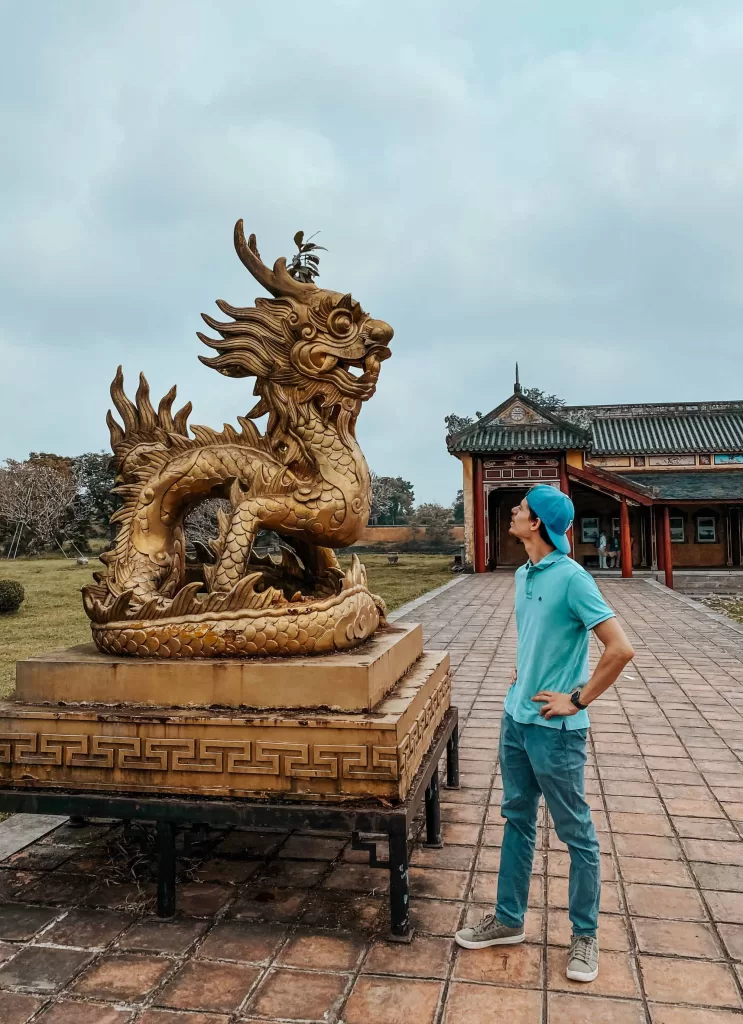
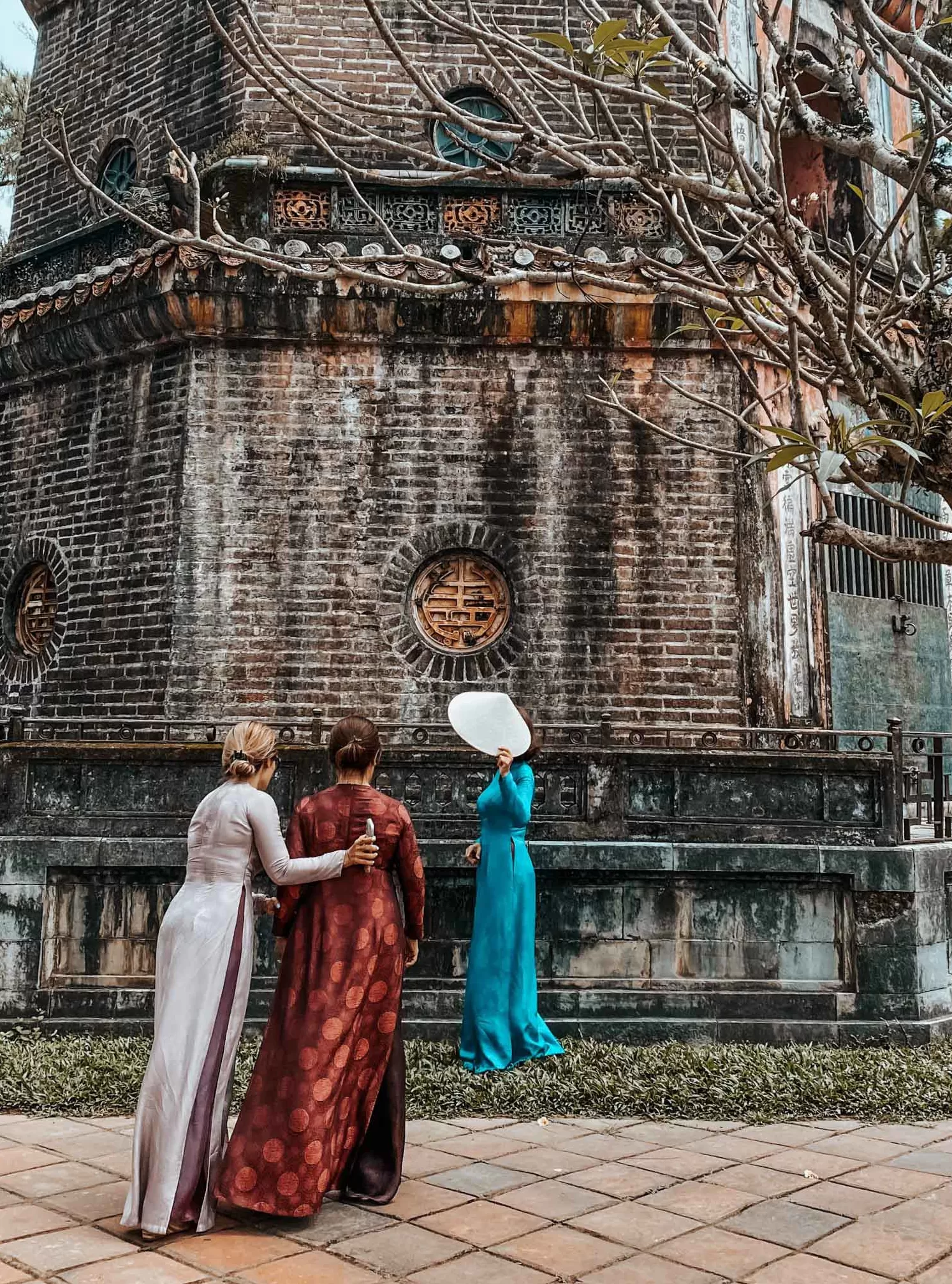
Before leaving Hue, there is one really cool stop – an abandoned water park. It has no historical relevance, but it’s a really mystical place. We heard some people saying that you might have some troubles entering – to be honest we had no problem when we visited it, but things might have change, so be sure to do a quick search beforehand. You have to be mindful of your surroundings since this place is abandoned – the structures around you might not be in the best shape.
After visiting Hue, you’ll drive to the next destination – Hoi An and you’ll go through the famous Hai Van Pass – one of the most scenic roads in Vietnam.
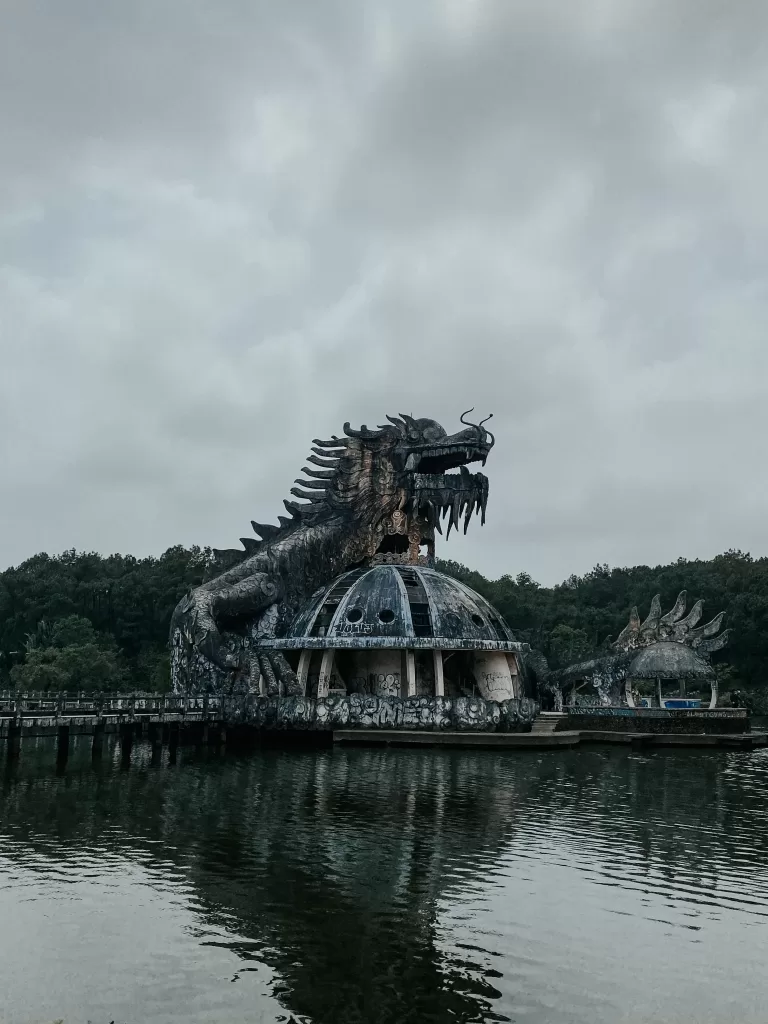
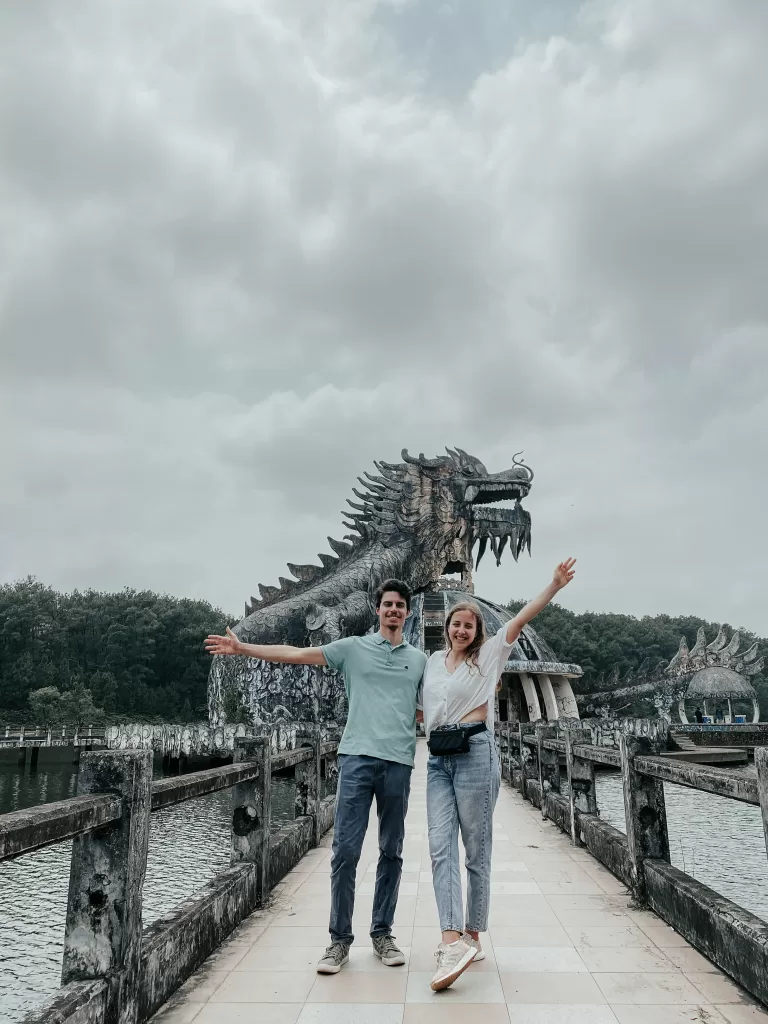
Day 8: The Magical Hoi An
Hoi An is beautiful, colorful and picturesque. From all the cities we visited in Vietnam this was the one that had the most impact on us. it’s a stunning mix of culture, beauty and, by night, a spectacle of lights!
Before starting the tour of the city we made a detour to visit the Monkey Mountain. Unfortunetly, the park was closed due to a landslide, but we got the chance to visit Linh Ung Pagoda and the astonishing nearby Lady Buddha Da Nang, a magnificent and imponent statue in a stunning location.
After this small detour, we went for a fun ride in a Cam Thanh coconut boat trip. It’s not the most incredible thing you’ll do in Vietnam, for sure – but it’s a fun experience and a way of supporting local fishermen villages, which typically have a low income. The best thing about the experience will be your guide! They are friendly and always in a good mood (at least ours was!).
After your boat tour you can start exploring the ancient city of Hoi An, it is a small town, so you can easily explore it by just walking around.

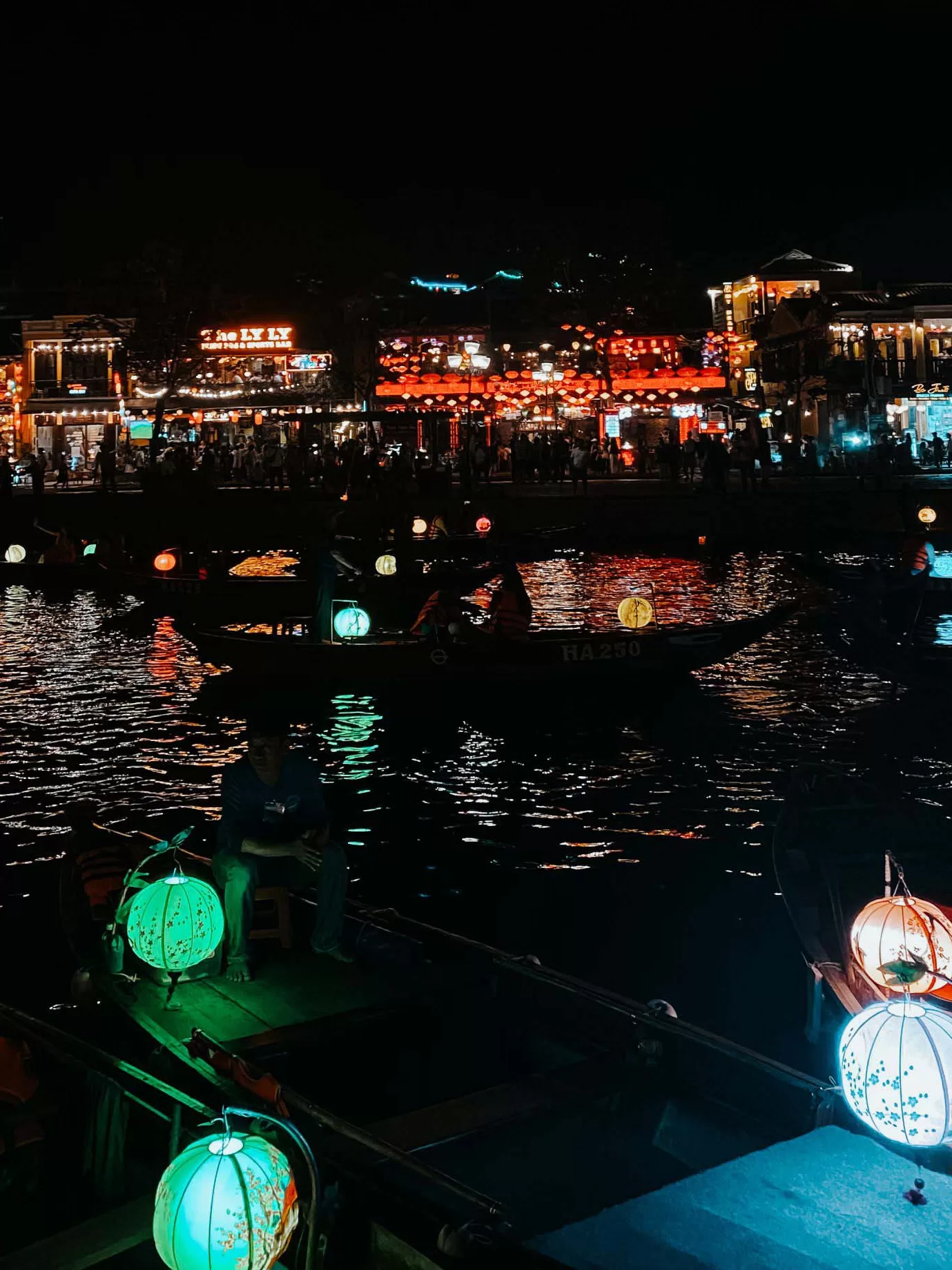
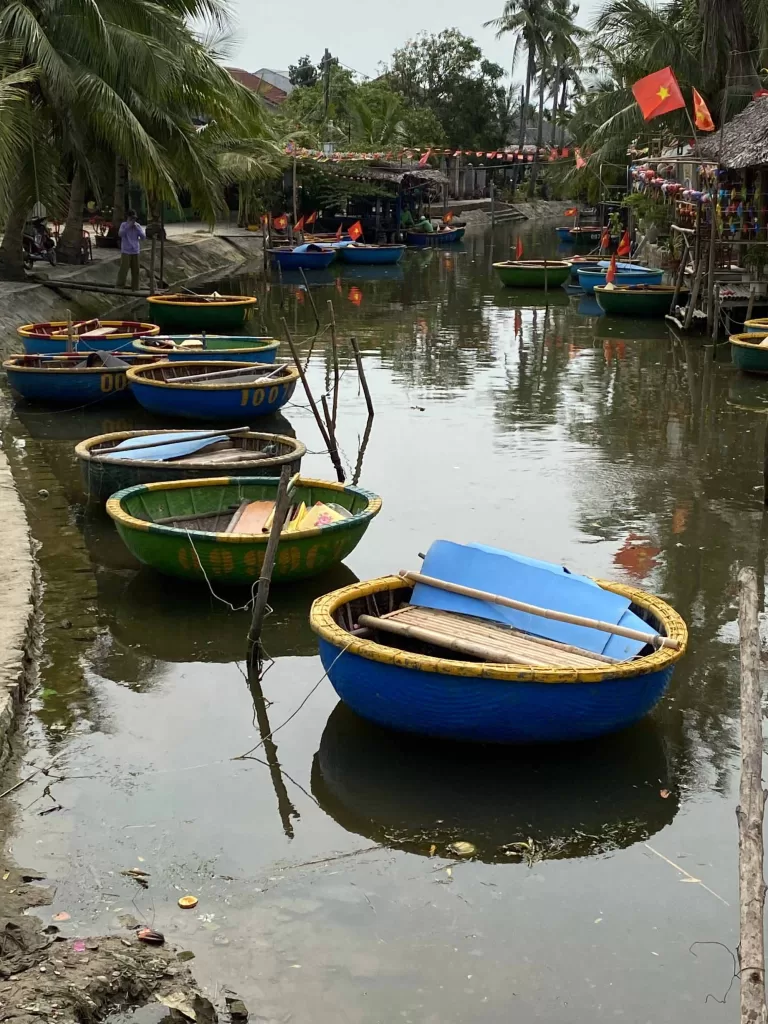
During your walking tour you should make some stops:
- Ba Mu temple
- Japanese covered bridge
- Assembly Halls – these assembly halls were built by Chinese communities living in Hoi An during the 17th and 18th century, when the city was one of the busiest international trading ports. You’ll find 5 different assembly halls in Hoi An
- Quảng Đông: Cantonese Assembly Hall
- Phuc Kien: Fujian Assembly Hall
- Trieu Chau: Chaozhou Assembly Hall
- Ngu Bang: Chinese Assembly Hall
- Hai Nam: Hainan Assembly Hall
- Make a stop in one of the old houses of Hoi An, like Tan Ky Old House
Take your time to just walk around the city and enjoy the markets. At night, you’ll be amazed by how beautiful the riverfront is, full of colorful lanterns.
Day 9: Ba Na Hills – is it Worth It?
Do you want to see the bridge with two hands? Ba Na Hills is your place. But beware that the bridge itself doesn’t have a historical or cultural heritage – it is called Golden Bridge and it was built in 2018 as part of the Ba Na Hills theme park.
In all honesty we had a bit of FOMO (fear of missing out) so we visited the park, but looking back we would skip this one for sure and maybe use this day for another purpose. This doesn’t mean the park is a bad spot, not at all, it’s just not what we were expecting. In its essence it’s a Disney like theme park (without the roller coasters) that seems to have been tailored to emulate a lot of the vibes of middle age Europe.
It’s a stunning project built in the middle of a beautiful scenario of mountains and trees (the cable car ride is fantastic and long!) but a theme park wasn’t the type of location we wanted to visit during our Vietnam trip – we still manage to have some cool pictures but we learned a valuable lesson: some locations are not worth it even if it’s just for a great pic!
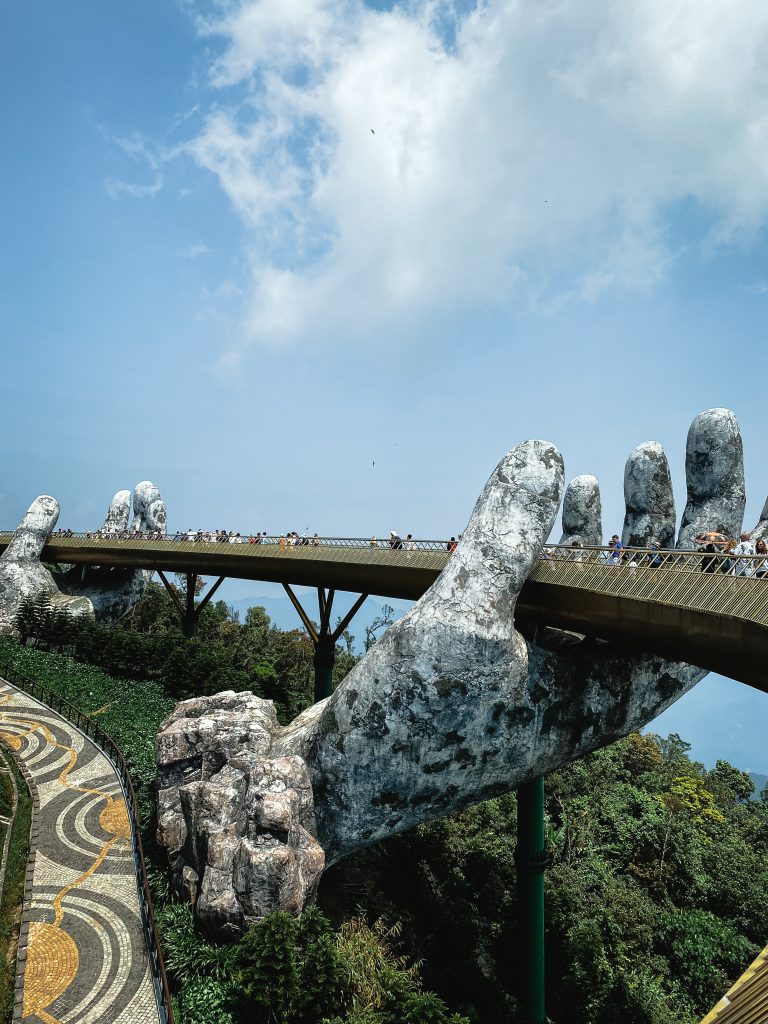
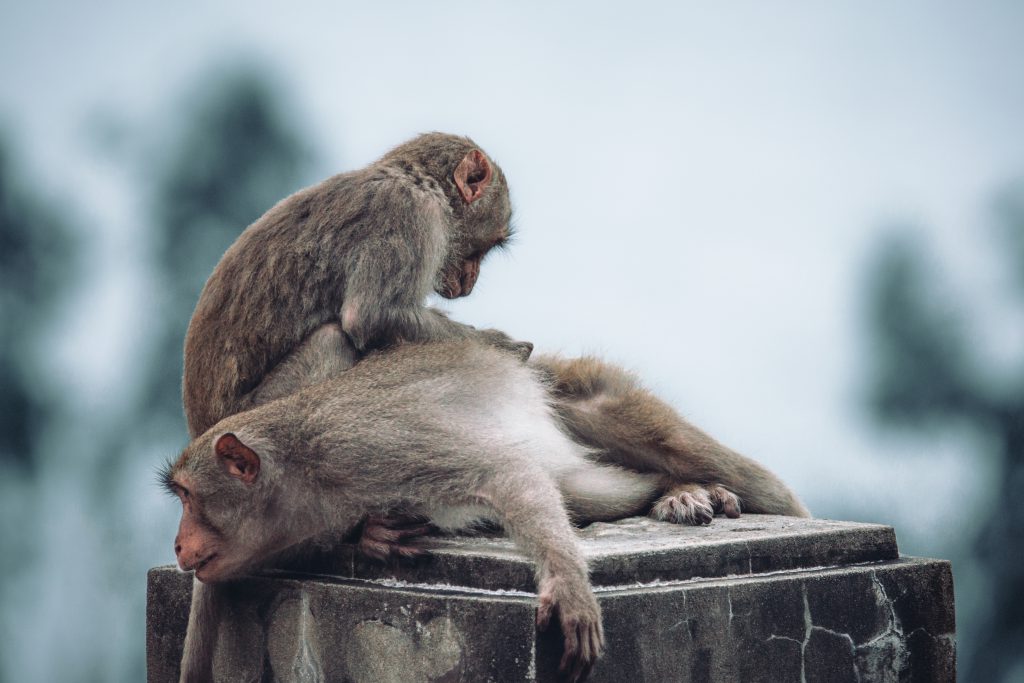
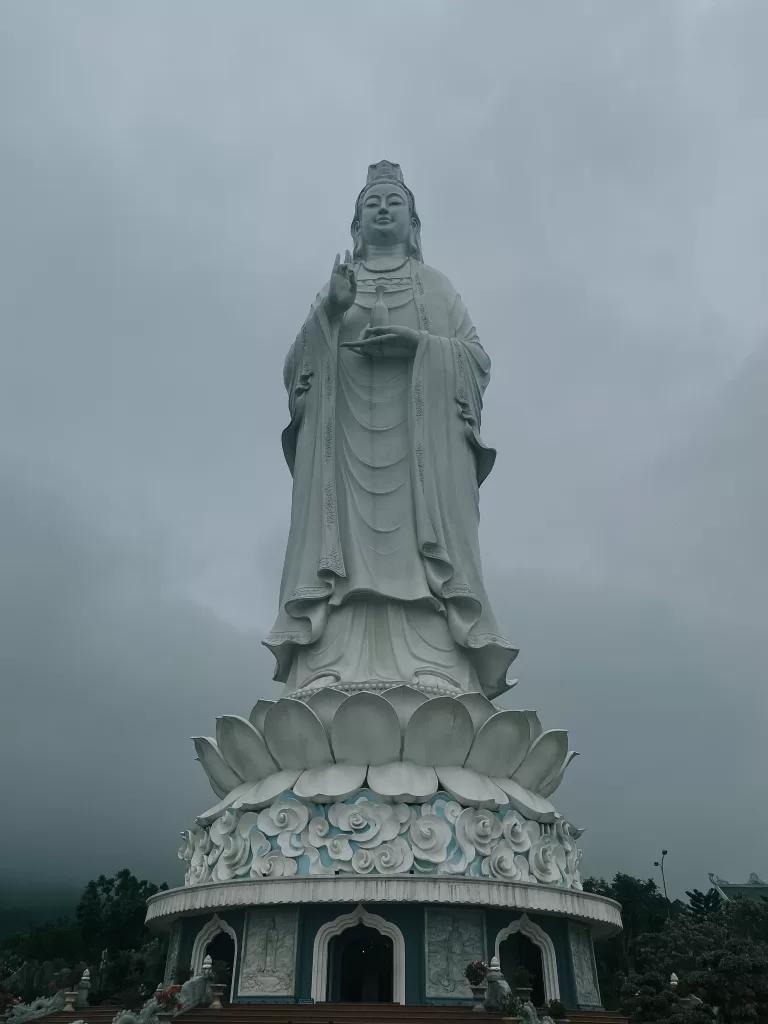
If you you want to skip Ba Na Hills you have a few options:
- Spend an extra day in Cat Ba island for the a 3 days/2 nights tour
- Visit Monkey Mountain
- Heading directly to Cat Tien National Park and spent the night there
- Travel to Ho Chi Minh and do a city tour
If you visit Ba Na Hills or the Monkey Mountain you should use the evening to travel from Danang to Ho Chi Minh. The travel time from Danang to Ho Chi Minh might be a bit too much if you choose to travel by train or bus – so for this one we recommend you to take a 1h flight.
Day 10: Cat Tien National Park
You can either travel to Cat Tien by private car or by bus, and it will take you around 4h from Ho Chi Minh. If you spend the night at Cat Tien, book a Gibbon trekking tour the night before. It’s an early call, but hearing the gibbon calling first thing in the morning is a magical experience.
You can hike around Cat Tien National Park and even rent a bike. The park is beautiful and raw, so don’t miss this hidden gem. In one of the hiking trails you can take, you’ll see giant Tung trees and so many different plants. If you’re lucky (and traveling after the rainy season) you’ll see thousands of butterflies flying around.
Head to the tourist information center as soon as you arrive at the park, they’ll provide you with all the information you need.
You can also visit their primate and bear rescue center, it’s always important to support such centers as they do a very tough yet extremely important job of saving and preserving endangered species. In Vietnam due to traditional Chinese medicine, there are a lot of illegal hunting so if you have the chance to do so make sure to visit these centers as your contribution is important to keep them active – If you want to check more information on ethical travel check this page.
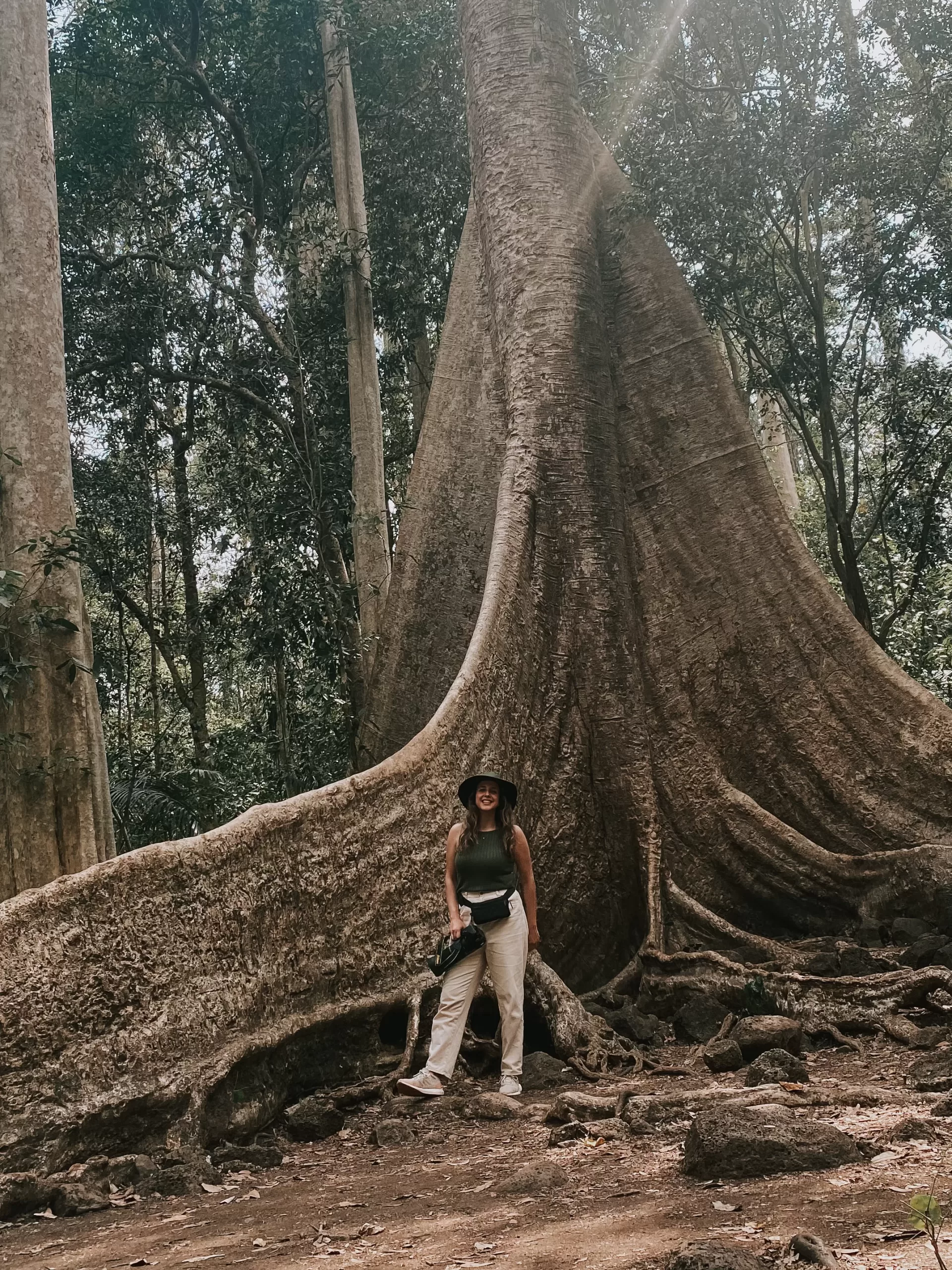
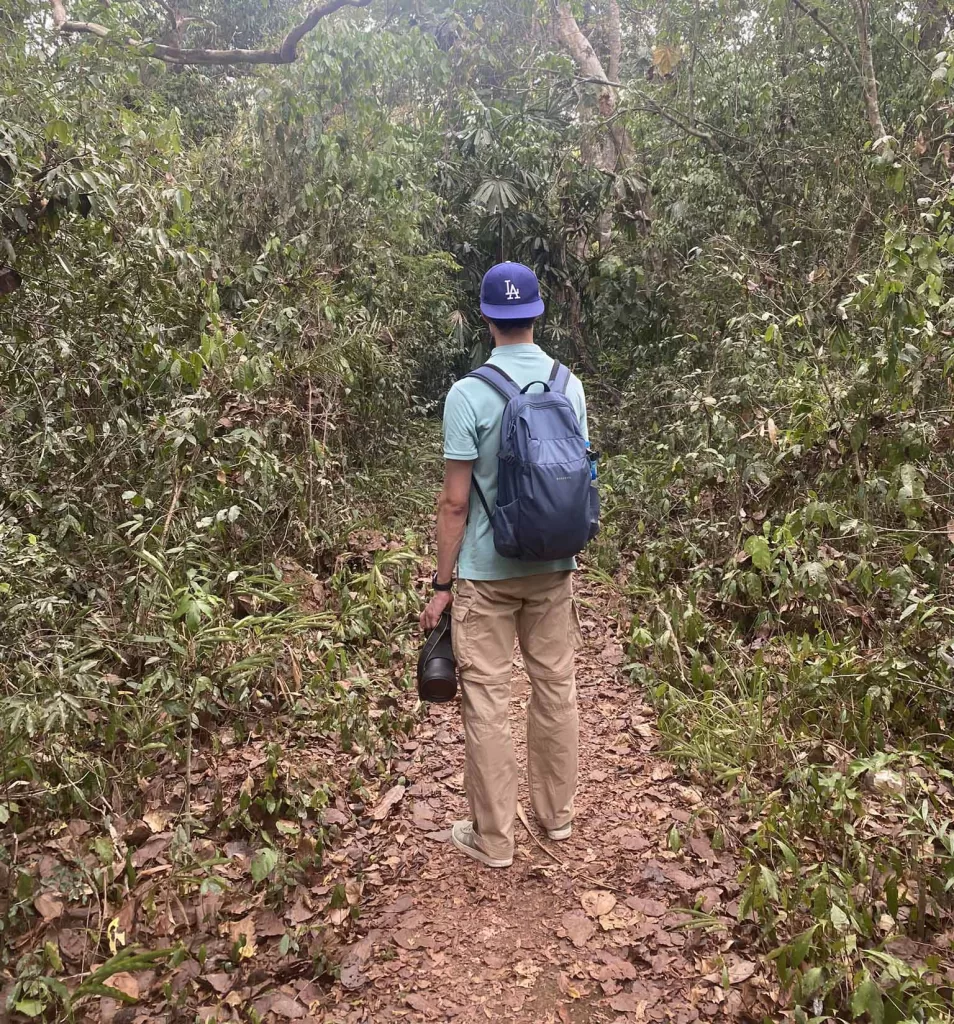
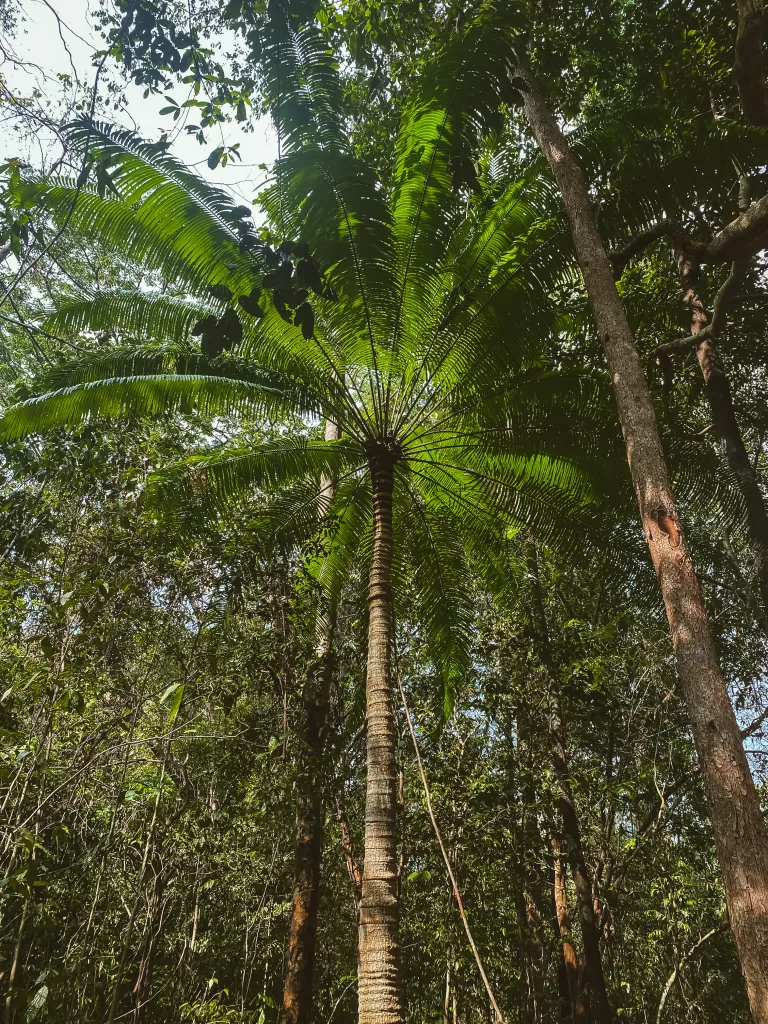
By the end of the day you should get back to Ho Chi Minh.
Day 11-13: Phu Quoc Island
This itinerary is intense so we know you need some time to relax. Phu Quoc is a famous place for locals to spend holidays as well, since it’s full of beautiful beaches. Phu Quoc is an island south of Vietnam and it is the perfect way for a relaxing period after going across the entire country!
While the scenery and beaches are indeed amazingly beautiful, Phu Quoc also suffers from the same plastic pollution problem as Ha Long Bay.
According to the locals it is a mix of over-tourism, litter coming from neighboring countries and lack of infrastructure for garbage disposal.
As travelers we need to make sure to have the least impact possible on the countries we visit, so be mindful of this and try to avoid plastic as much as you possibly can.
To arrive at Phu Quoc you can either take a ferry or fly there. The ferry takes around 2-3h and the flight is around 1h.
You can use your time in Phu Quoc to snorkel – we booked a tour with Onbird and did some island hopping as well. We had a really great time and even if you’re a beginner snorkeler, they got you covered!
You can also visit some of Phu Quoc’s beaches like Ram Tram, Sao Beach or half-moon beach.
Alternative Itinerary
If you prefer, instead of spending the last days in Phu Quoc, you can travel to the Sapa region in the beginning of your journey, after visiting Hanoi.
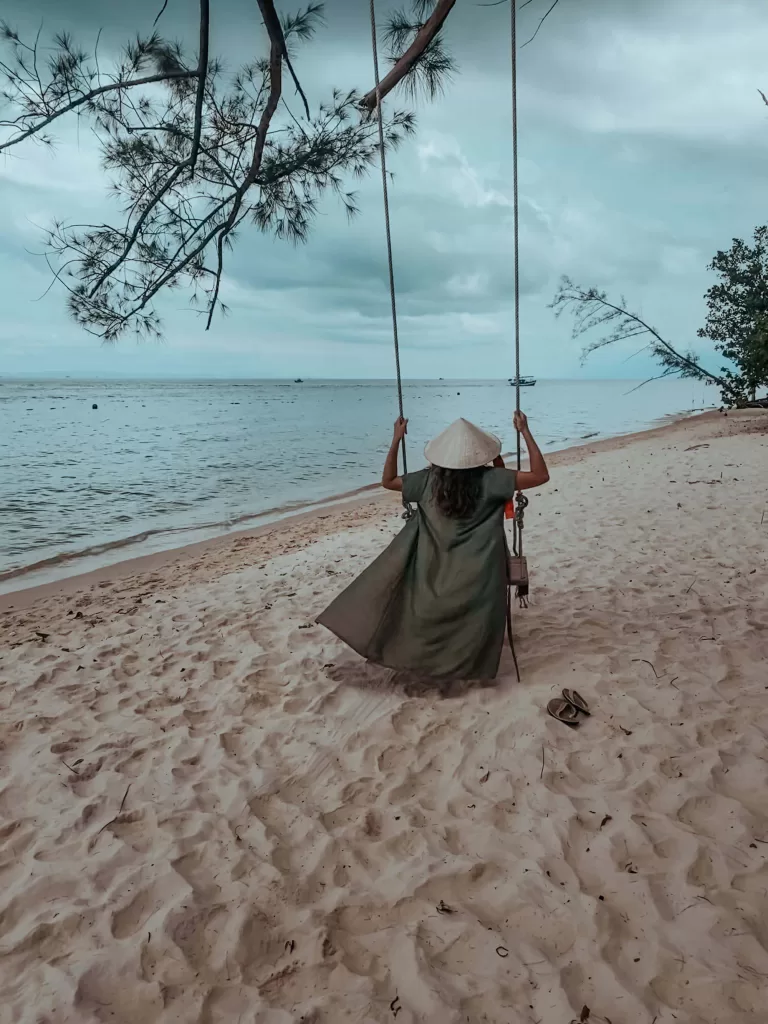
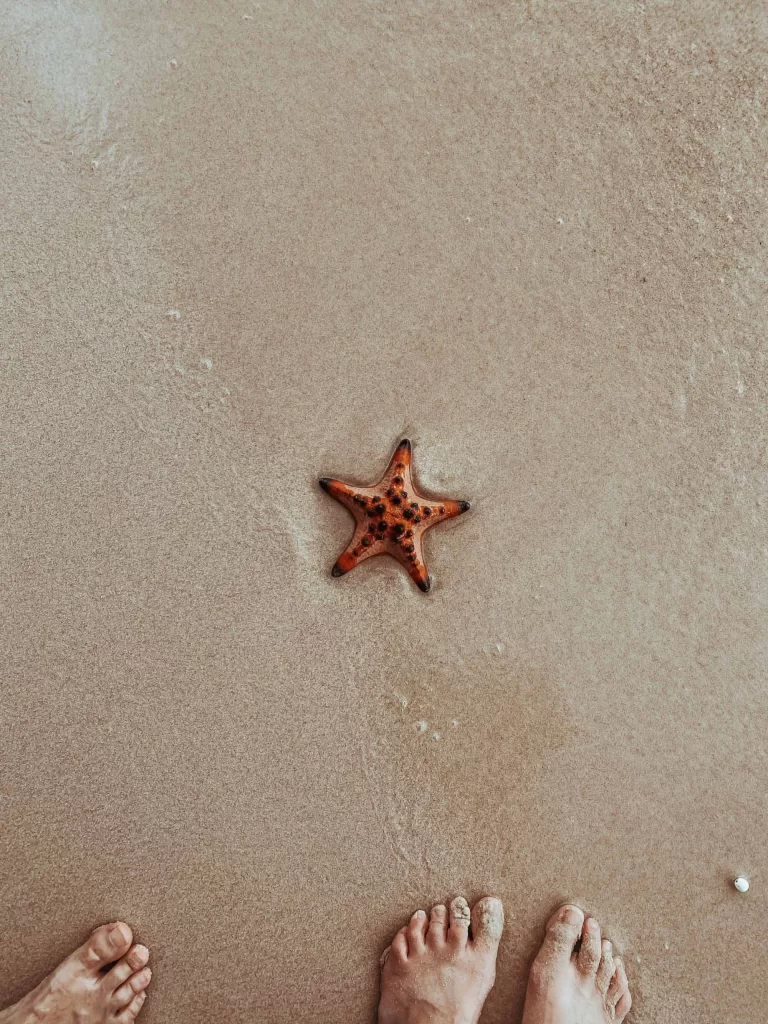

Day 14: Departure
Depending on the time of your flight you might still have the chance to relax during the morning.
After that, it is time to return. In our case, we took a flight directly from Phu Quoc back to Vietnam mainland and then straight home!
When to Visit Vietnam
The best time to visit Vietnam varies across regions. In the north (Hanoi, Sapa), the peak time is from October to April, with milder temperatures and little rainfall. The rainy season falls between May and September, with occasional typhoons, making it less ideal for travel.
The central region (Hue, Da Nang, Hoi An) is fantastic to visit from February to July. Typhoons are more common from September to January, leading to potential flooding and less travel suitability.
The south (Ho Chi Minh City, Mekong Delta) boasts more consistent temperatures, but the dry season from December to April is preferred due to lower humidity. The rainy season occurs from May to November.
Below there’s a map with the best times of the year to travel to Vietnam depending on your goal:
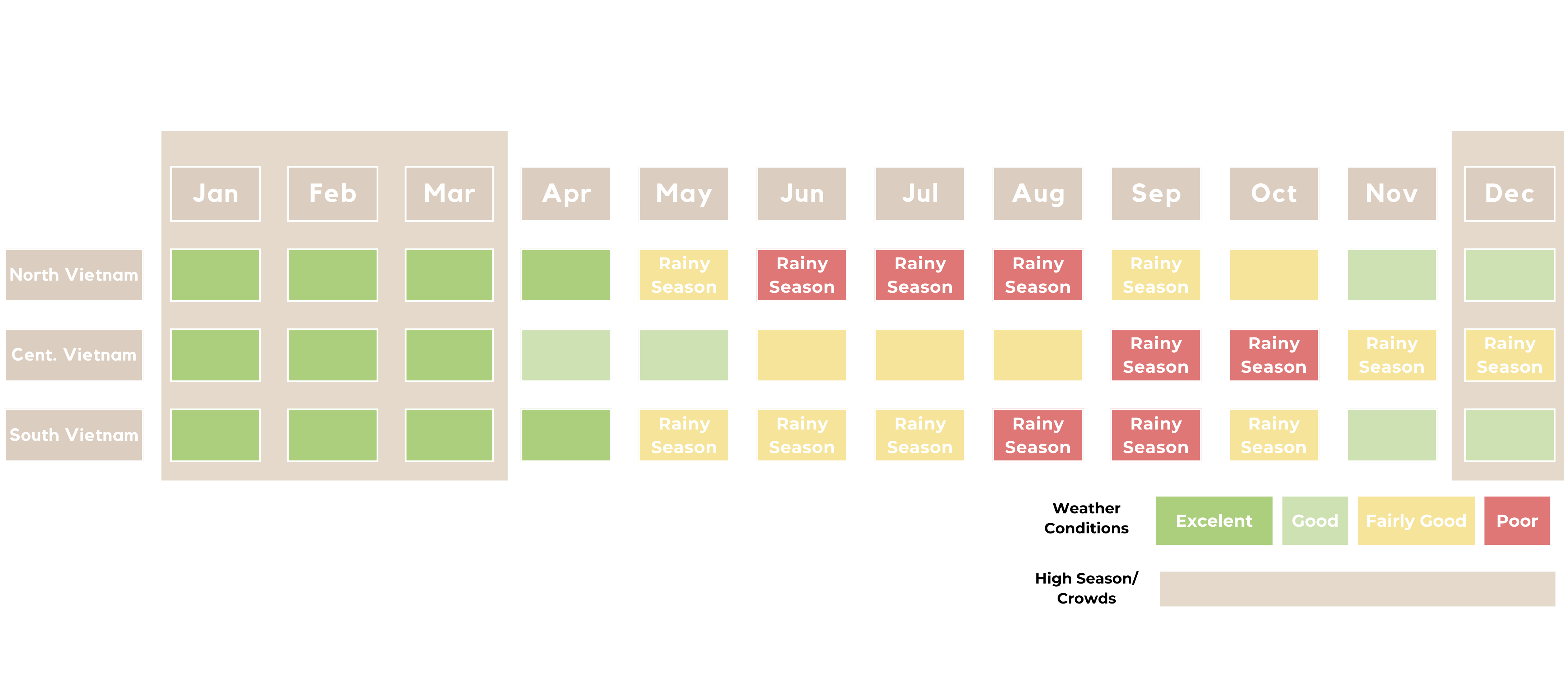
Entry Requirements: Visa
You’ll need to check this one, because it might depend on your nationality. If you need a Visa, the process is quite simple and fast – you can find the official link for the process below. The Visa is valid for 90 days with a cost (for a single entry) of 25 US dollars:
Foreigner apply for e-visa – National portal on Immigration (xuatnhapcanh.gov.vn)
We always think it’s better to be safe than sorry, so we recommend you to take your time when requesting Visas. We usually do it one month ahead of our travels.
Please contact us in case of any issues with the link.
How to get around in Vietnam
You have a few options when it comes to travel in Vietnam. Renting a motorbike is always an option to drive around the cities if you have experience. Since we didn’t have any experience, we decided to hire a driver when we were in places like Hanoi and Hue.
If you are driving yourself, make sure you not only have driving experience but most importantly you’ve driven or gotten used to the Vietnam traffic before. It is a chaotic experience, and while it does seem to work for the locals it is heavily crowded and a lot of the traffic rules seem to be just a suggestion!
To travel to different locations you can either do it by train or bus. Vietnam is known for having some good sleeper buses. You can also fly, since Vietnam has some domestic airports, besides Hanoi and Ho Chi Minh.
We booked a tour with Yin and Yang and it was an amazing experience, we had both a guide and a a driver with us for the most part. If it’s your first time in Southern East Asia and you feel more comfortable with this approach we highly recommend this tour, reach out to them over WhatsApp.
Practical Information
We want to share some additional information that will make your journey a better overall experience.
Safety, Travel Insurance and SIM Card
We felt safe all the time in Vietnam. Of course you need to be careful with petty crime and scams, but that is a reality in every single country you visit. If you’re driving around, you really need to be extra careful since traffic is a bit of a chaos. We didn’t see any accidents during our time in Vietnam, but we have to recognize that it can be a bit dangerous. Make sure you pay attention while crossing the street, other than that you will be fine!
When traveling, you should definitely have travel insurance. We have been using IATI for our travels and depending on what we’re doing, we might choose different insurance options.
As for the SIM card, you have lots of cheap options specially when you land in Hanoi, there are multiple stores selling you local SIM cards for reasonable prices. If however you want to avoid buying physical ones, nowadays there are many options of E-SIM cards that you can buy in advance or activate upon arrival. We mostly use Airalo.
Medical Precautions
Before visiting Vietnam, a visit to your doctor’s office is for sure a recommendation. Below are just recommendations based on the opinion of the medical professionals we consulted, we have no credentials to provide medical guidance, it’s always recommended to seek it on your own.
Typhoid Fever: We took vaccination against Typhoid as per our doctor recommendation, again make sure this applies to both your country and to the areas of Vietnam that you will visit.
Drinking water and food: Avoid drinking water from the tap. We also avoided brushing our teeth with tap water.
Avoid having drinks with ice on them, if possible. Is most cases the ice will be ok, but be mindful of this.
As for the food, you should definitely experience the food culture of Vietnam (which is amazing), but be mindful of the places where you are eating. Check for reviews and if eating street food, always go for the ones who have more people, since it means the food won’t be sitting there.
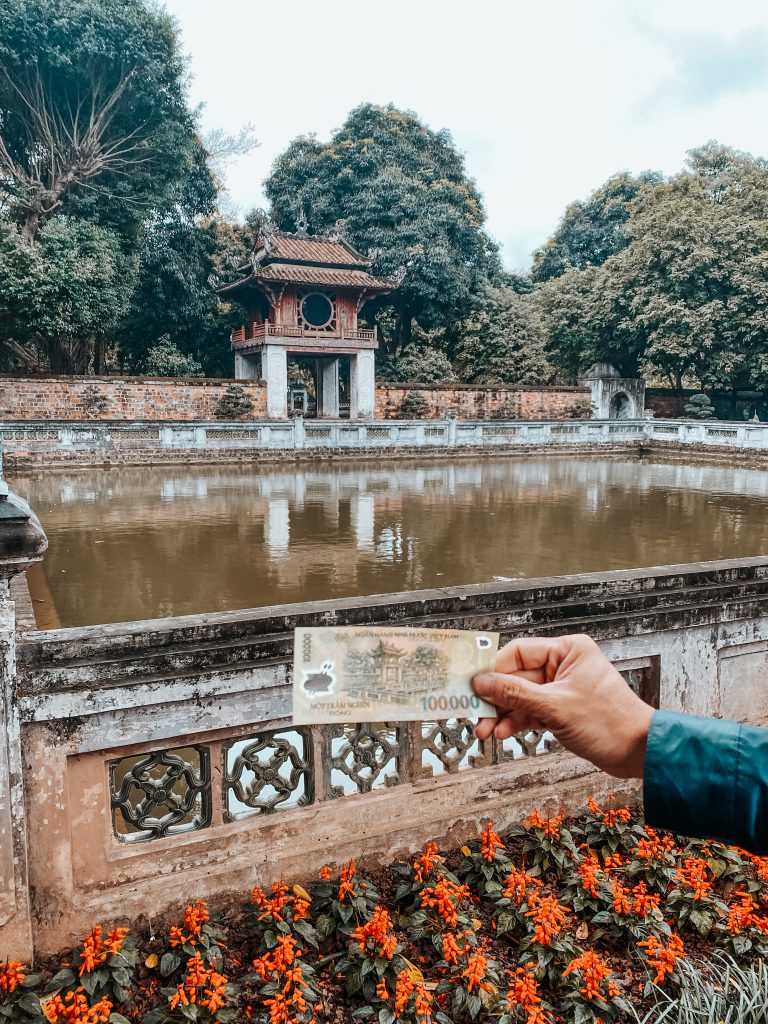
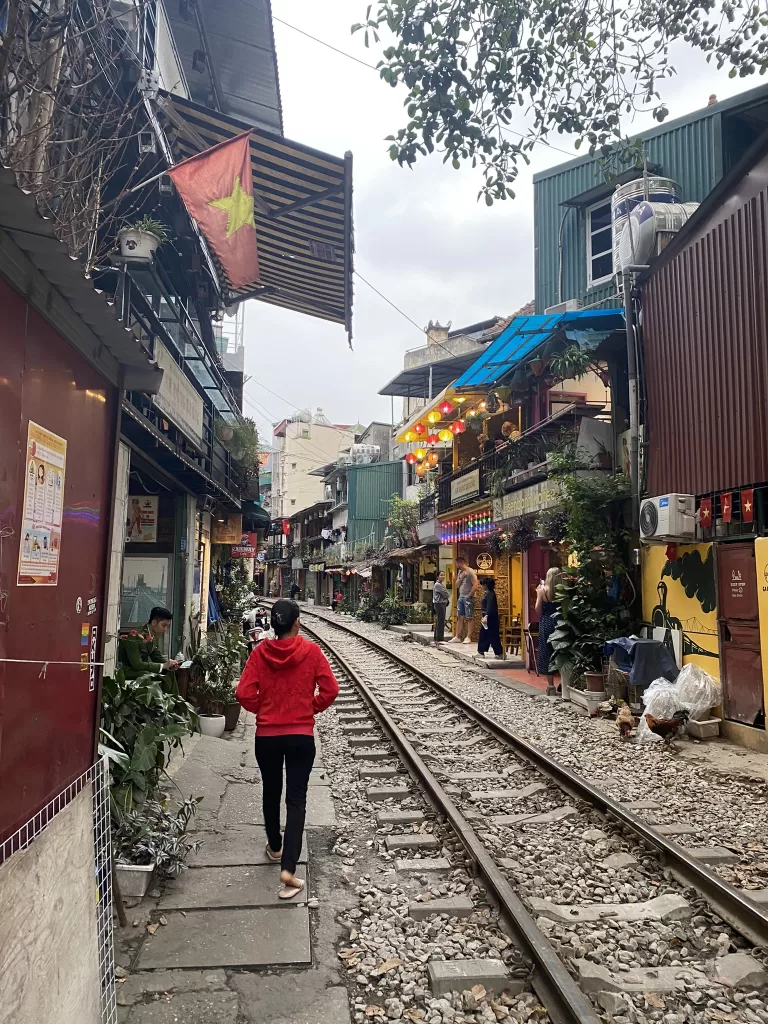
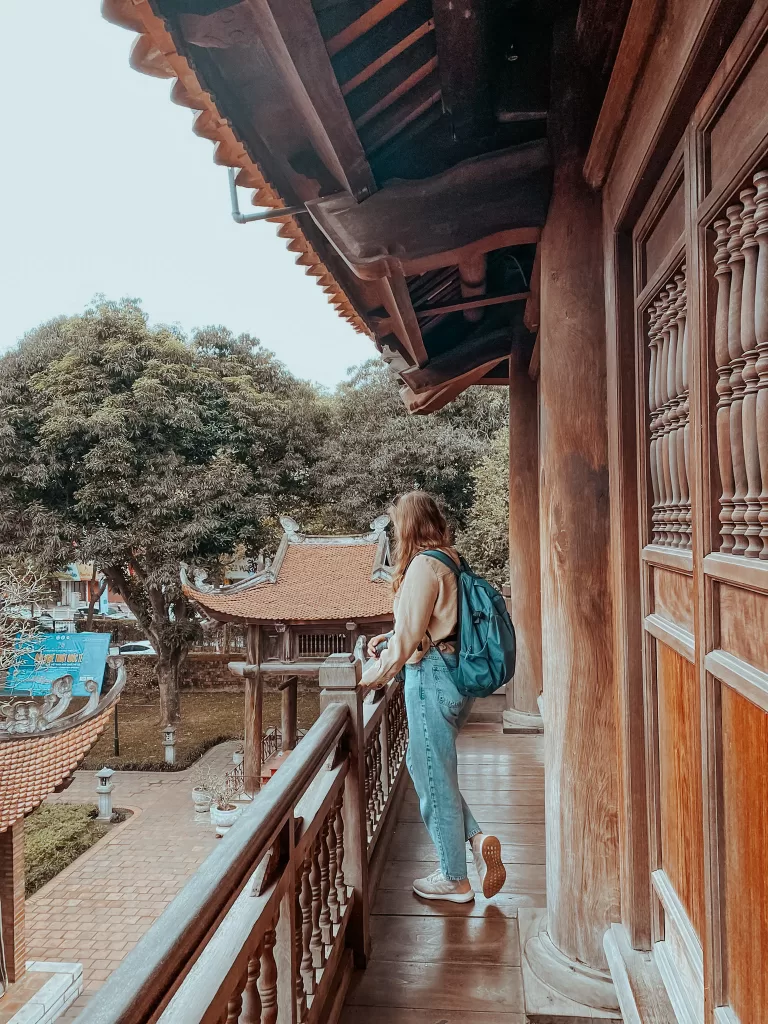
ATMs, Money and Negotiating Prices
The currency in Vietnam is the Vietnamese Dong. You can find ATMs around cities. We carried cash with us, since we needed to pay for some of the entry fees to some of the monuments and some restaurants might not have the card option.
Bargaining in Vietnam is a tradition, so feel free to experience this cultural exchange. But always be mindful and respectful when doing so. Usually this is done in a friendly manner and the tip we got from our local guide would be to ask for 1/3 of the original price. As an example if the seller tells you the product is 3 dollars, you state 1 and the seller will most likely counter propose for 2 and you settle – of course this is a simplistic example but you get the drill!
